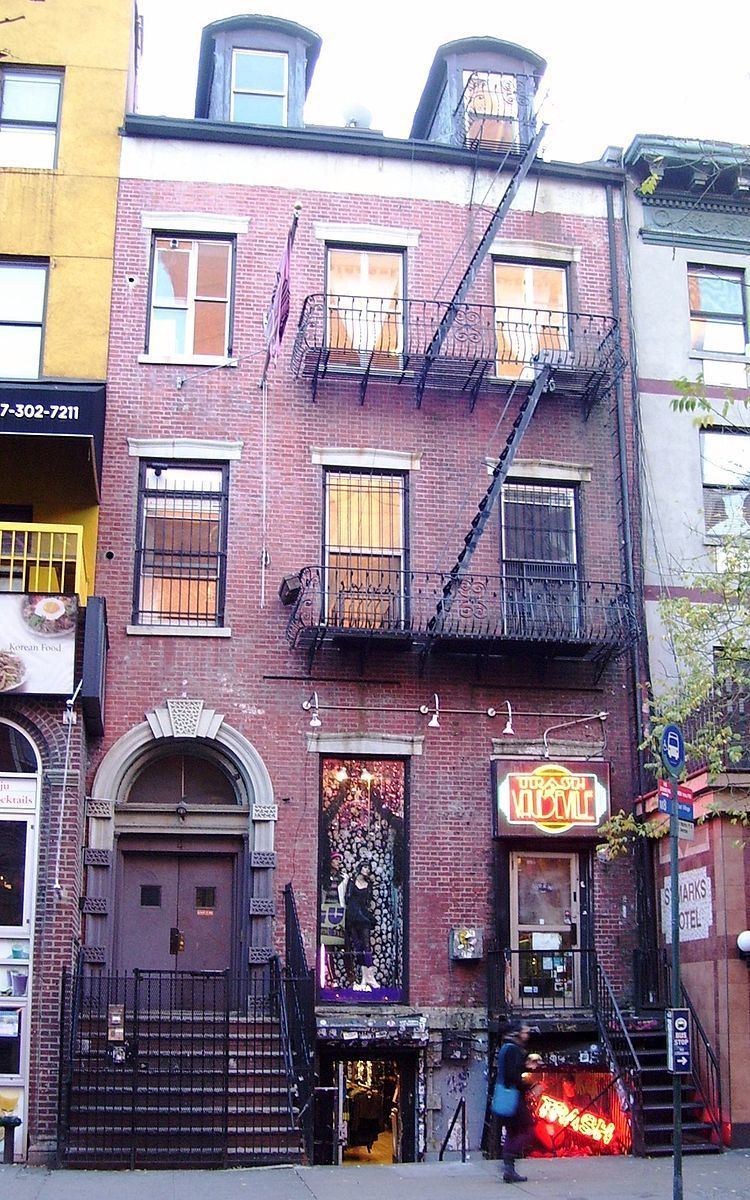Name Thomas Davis | ||
 | ||
Thomas E. Davis (c. 1785–1878) was a prolific real estate developer who built residential properties in New York between 1830 and 1860.
Contents
Biography
Davis emigrated from England to New Brunswick, New Jersey, with the intention of setting up a distilling business. When this failed he moved to New York, and with financial backing from the banking house of J. L. & S. Josephs & Co., began a career in property speculation.
In 1831, Davis built Federal style townhouses on both sides of East 8th Street, between Third & Second Avenues, developing the entire block known as St. Mark's Place. There are three surviving townhouses from this development: the Hamilton-Holly House at 4 St. Mark's Place, the building at 25 St. Mark's Place, and the best preserved of the three, the Daniel LeRoy House at 20 St. Mark's Place.
Further developments by Davis in the area included Carroll Place, on the block from Thompson Place to LaGuardia Place.
Between 1834 and 1835, Davis bought land on Staten Island that ran from the quarantine station to Sailors' Snug Harbor. He called the area New Brighton (after a coastal resort in England), and built Greek revival style houses on the shoreline. An association of wealthy entrepreneurs was set up to further develop the land and promote the area as a suburb, with easy access to New York via steam ferries. However, almost immediately the financial crisis of 1837 resulted in foreclosure of the association. Davis, with co-partners, re-acquired the development and managed to ride out the recession. Davis lost a substantial amount of money during this period but survived the crash, while the bankers who had initially provided support for Davis, J. L. & S. Josephs, failed.
Toward the end of the recession Davis was able to purchase 400 plots on Fifth Avenue (north of Twentieth Street) for a few hundred dollars each and built a complete block of fine dwellings between East 31st and East 32nd Street.
Davis became extremely wealthy; a real estate owners' list of the period placed Davis third after John Jacob Astor and department store mogul A.T. Stewart.
In the mid 1860s, Davis moved with his family to Italy. He died in Florence on March 16, 1878, at the age of 93.
St. Anthony Falls
Davis and two of his sons-in-law, Frederick C. Gebhard and John F. A. Sanford, became involved with financing the St. Anthony Falls Water Power Company in Minneapolis. Sanford, who had been a frontiersman, was acquainted with the men developing the project and they invited him to invest. He in turn brought in Davis and Gebhard. The relationship between the developers and the New York backers was not good, and finally broke down following the death of Sanford in 1857. Gebhard died in 1865, his brother William H. Gebhard became involved, court action followed and it took several years for the situation to be finally resolved.
Family
Davis's wife was Anne Power, who had been born in Ireland in October 1799. Her brother was John Power, Vicar General of New York and pastor of St. Peter's on Barclay Street in Lower Manhattan. Another brother was Irish politician Maurice Power, who married the daughter of Judge Henry Brockholst Livingston.
Thomas and Anne Davis had eight children, seven of whom were daughters:
The only son of Thomas and Anne Davis, Thomas E. Davis Jr., married Marianita, daughter of Lorenzo Jove. Davis Jr. was a friend of the Irish writer and poet Fitz James O'Brien, and was involved in trying to raise a regiment with him during the American Civil War, called the McClellan Rifles. When O'Brien was killed, Davis Jr. brought his remains back from Baltimore for burial in New York and acted as one of his executors. Davis Jr. was in poor health and eventually moved to Europe where he died in Bournemouth, England in 1916. His wife had died in 1870 and his daughter, Marianita, remained his companion until his death.
